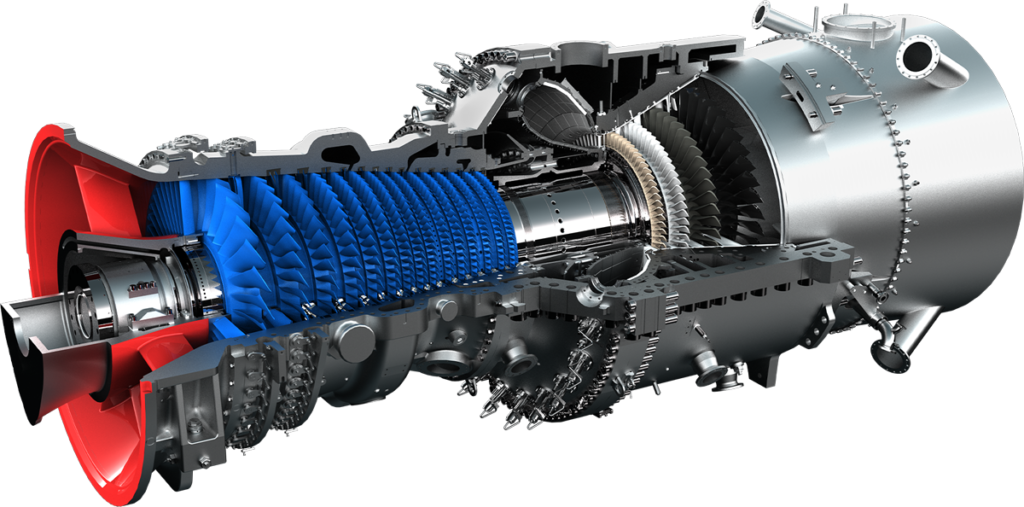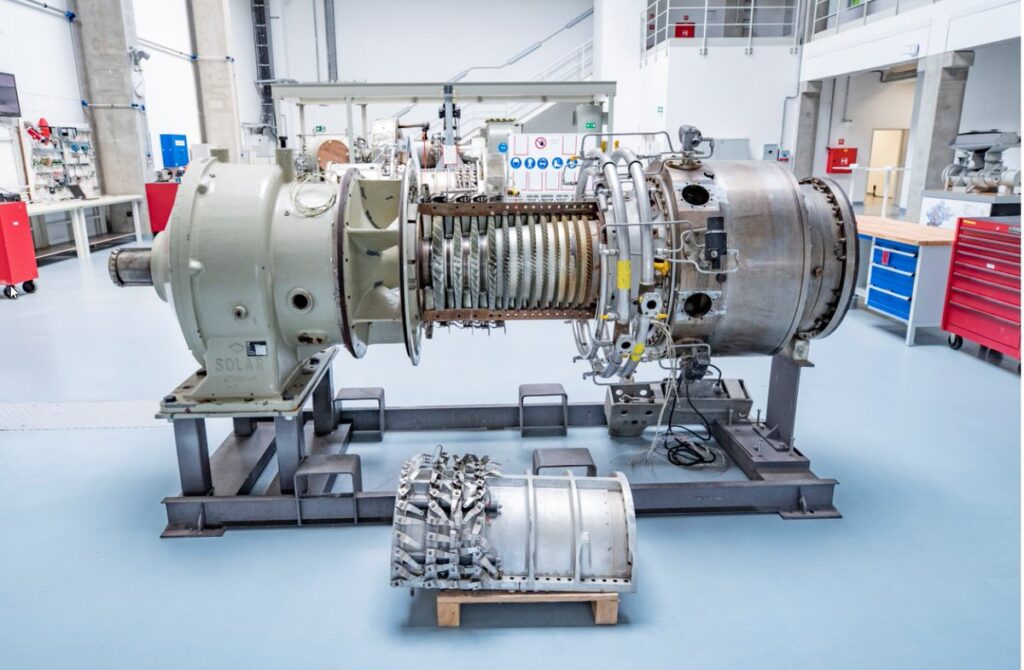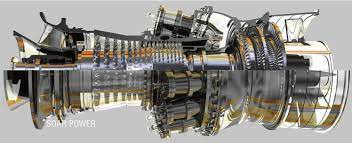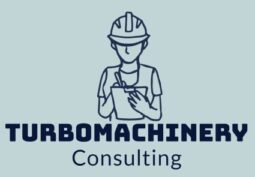FOUNDATIONS - GAS TURBINES

LIMITATIONS IN ENGINEERING & DESIGN - FOUNDATIONS
When it comes to the engineering and design of foundations for industrial gas turbines in power generation, oil, gas, and petrochemical industries, there are several limitations and critical risks that need to be considered to improve reliability, safety, and avoid critical failures in existing plants and new projects. These include:
Soil Conditions: The foundation’s performance heavily relies on the underlying soil conditions. If the soil lacks sufficient bearing capacity, stability, or contains expansive soils, it can lead to settlement, differential movement, or even foundation failure. Understanding the soil characteristics through comprehensive geotechnical investigations is crucial.
Vibration and Dynamic Loads: Gas turbines generate significant vibration and dynamic loads during operation. These loads can impose high stresses on the foundation, leading to fatigue and structural failure if not properly addressed. Vibration-induced issues can also propagate to other components, causing further damage and affecting the overall reliability of the turbine.
Seismic Considerations: In regions prone to earthquakes, the foundation design must account for seismic forces. Failure to address seismic requirements adequately can result in catastrophic consequences during an earthquake event. Compliance with seismic codes and standards is crucial to ensure the safety and integrity of the foundation.
Foundation Design and Structural Integrity: The foundation must be designed to support the weight of the gas turbine and withstand various operational and environmental loads, including wind loads and temperature differentials. Inadequate design, such as insufficient reinforcement or inadequate concrete strength, can lead to structural deficiencies and compromised reliability.
Thermal Effects: Gas turbines experience significant temperature differentials during operation. The foundation design should consider the expansion and contraction of the turbine structure, as well as the associated thermal stresses. Failure to account for thermal effects can result in cracking, distortion, and potential failure of the foundation.
Equipment Alignment: Proper alignment between the gas turbine and its foundation is crucial for the overall reliability and performance of the system. Misalignment can lead to increased vibrations, premature wear of components, and compromised safety. Strict alignment tolerances and careful installation procedures are essential.
Accessibility and Maintainability: The foundation design should allow for easy access to critical components and facilitate maintenance activities. Limited accessibility can lead to challenges in inspections, repairs, and replacement of components, which can impact the reliability and safety of the gas turbine.
Environmental Considerations: The foundation design should account for environmental factors such as soil erosion, water table level, corrosive environments, and exposure to chemicals or contaminants. Failure to address these factors can lead to deterioration, degradation, or accelerated corrosion of the foundation structure.
Codes and Standards: Compliance with applicable codes and standards, such as those provided by industry organizations like ASCE, API, or turbine manufacturers’ recommendations, is crucial to ensure the foundation’s reliability, safety, and adherence to best practices.
Mitigating these limitations and critical risks requires thorough engineering analysis, adherence to best practices, collaboration between disciplines, and continuous monitoring and maintenance. By addressing these challenges and incorporating appropriate design considerations, the reliability and safety of gas turbine foundations can be enhanced, reducing the risks of critical failures in both existing plants and new projects in the power generation, oil, gas, and petrochemical industries.
WHY, WHEN, WHERE, WHAT, HOW TO APPLY ENGINEERING & DESIGN - FOUNDATIONS
Applying proper engineering and design principles to the foundations of industrial gas turbines is essential for improving reliability, safety, and avoiding critical failures and shutdowns in existing plants and new projects in the power generation, oil, gas, and petrochemical industries. Here’s a breakdown of why, when, where, what, and how to apply engineering and design considerations for gas turbine foundations:
Why: Gas turbine foundations play a vital role in supporting the weight of the turbine and transmitting the generated loads to the ground. A well-designed foundation ensures stability, minimizes vibration and dynamic loads, and provides a safe and reliable operational environment for the gas turbine.
When: Engineering and design considerations for gas turbine foundations should be applied during the initial stages of a project, including feasibility studies, conceptual design, and detailed engineering. They should also be considered during upgrades or modifications to existing gas turbine systems.
Where: Gas turbine foundations are primarily used in power generation plants, oil refineries, gas processing facilities, and petrochemical plants. These foundations are typically designed for outdoor installations, although indoor installations may also be applicable in certain cases.
What: Key aspects to consider in the engineering and design of gas turbine foundations include:
- Site-specific geotechnical investigations to understand soil conditions, bearing capacity, and potential challenges.
- Structural analysis and design to ensure the foundation can withstand static, dynamic, and seismic loads.
- Vibration analysis and mitigation to minimize excessive vibrations and ensure the integrity of the foundation and surrounding structures.
- Thermal expansion and contraction considerations to accommodate temperature differentials during turbine operation.
- Alignment studies and precision installation to ensure proper alignment between the turbine and foundation.
- Accessibility and maintainability features to allow for easy inspection, maintenance, and repairs.
- Compliance with relevant codes, standards, and industry best practices.
How: The engineering and design process for gas turbine foundations typically involves the following steps:
- Conducting geotechnical investigations to understand soil properties, including bearing capacity, settlement characteristics, and seismicity.
- Performing structural analysis and design to determine foundation size, reinforcement requirements, and structural integrity.
- Utilizing advanced modeling and simulation techniques to evaluate the dynamic behavior of the foundation under operational loads.
- Considering environmental factors, such as corrosive environments, water table level, and soil erosion, in the design process.
- Collaborating with geotechnical engineers, structural engineers, turbine manufacturers, and construction professionals to ensure an integrated design approach.
- Incorporating site-specific conditions and project requirements into the design, such as local regulations, environmental impact assessments, and safety standards.
- Regular monitoring and inspection of the foundation during and after construction to verify performance and identify any maintenance or repair needs.
By applying these engineering and design practices, gas turbine foundations can be optimized for reliability, safety, and avoidance of critical failures and shutdowns. It is important to involve experienced professionals, follow industry guidelines, and conduct thorough assessments to ensure the foundation’s performance aligns with the specific requirements of the power generation, oil, gas, and petrochemical industries.

PROCEDURES, ACTIONS, STUDIES, MITIGATION, RECOMMENDATIONS IN ENGINEERING & DESIGN - FOUNDATIONS
To improve the reliability and safety of gas turbine foundations and avoid critical failures and shutdowns in existing plants and new projects in the power generation, oil, gas, and petrochemical industries, several procedures, actions, studies, mitigations, and recommendations can be applied. Here are some key considerations:
Geotechnical Investigations:
- Conduct comprehensive site-specific geotechnical investigations to assess soil properties, bearing capacity, and potential challenges.
- Perform soil testing, including soil borings, laboratory tests, and geophysical surveys, to gather accurate data for foundation design.
Structural Analysis and Design:
- Engage experienced structural engineers to analyze loads, vibrations, and dynamic behavior of the gas turbine foundation.
- Employ advanced structural analysis techniques, such as finite element analysis, to determine the optimal design for the foundation.
- Consider factors like wind loads, seismic activity, and thermal expansion to ensure structural integrity.
Vibration Analysis and Mitigation:
- Conduct vibration analysis studies to identify potential resonance issues and mitigate excessive vibrations.
- Use vibration isolation techniques, such as vibration isolators and dampers, to minimize vibrations transmitted to the foundation.
- Consider the effects of nearby equipment and structures on the foundation’s dynamic response.
Foundation Materials and Construction:
- Select suitable foundation materials, such as reinforced concrete or steel, based on project requirements and site conditions.
- Ensure proper construction techniques and quality control measures during foundation installation.
- Monitor and control curing processes to achieve desired strength and durability.
Environmental Considerations:
- Evaluate environmental factors, such as corrosive atmospheres, high humidity, and temperature variations, and incorporate appropriate protective measures in the foundation design.
- Consider potential impacts of water table level, soil erosion, and flood zones on the foundation’s stability and performance.
Alignment and Precision Installation:
- Ensure accurate alignment of the gas turbine and foundation to minimize operational issues and stress concentrations.
- Utilize precision installation techniques, such as laser alignment, to achieve proper alignment and reduce mechanical stresses.
Compliance with Codes and Standards:
- Adhere to relevant industry codes, standards, and regulations, such as those issued by the American Society of Mechanical Engineers (ASME) and the International Building Code (IBC).
- Stay updated with the latest revisions and requirements of applicable codes and standards.
Monitoring and Maintenance:
- Implement a comprehensive monitoring system to continuously assess the performance of the gas turbine foundation.
- Regularly inspect and maintain the foundation, including visual inspections, non-destructive testing, and repairs if necessary.
- Develop a maintenance plan that includes periodic inspections, foundation strengthening measures, and remedial actions.
Collaboration and Expertise:
- Foster collaboration among multidisciplinary teams, including geotechnical engineers, structural engineers, turbine manufacturers, and construction professionals.
- Seek the expertise of experienced professionals and consultants with a strong background in gas turbine foundation design.
By following these procedures, taking appropriate actions, conducting necessary studies, implementing mitigations, and adhering to recommended practices, gas turbine foundation reliability and safety can be improved, critical failures and shutdowns can be avoided, and the performance of existing plants and new projects in the power generation, oil, gas, and petrochemical industries can be enhanced.

